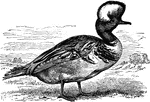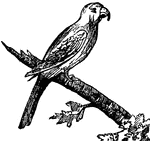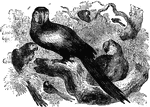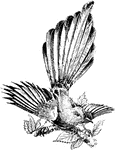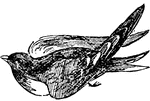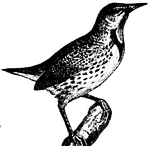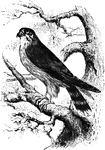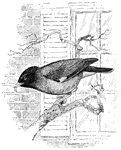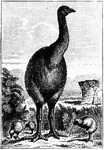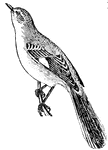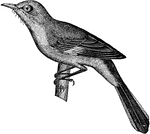204 illustrations of birds including: macaw, maculta, magpie, mallard, man-of-war, martin, meadow-lark, menura, merganser, merlin, mina, mino-bird, mockingbird, momot, moor-hen, moorfowl, mooruk, mound-bird, mourning dove, natatores, night-jar, nighthawk, noddy tern, notornis mantelli, nut cracker, nuthatch, oriole, ortolan, osprey, ostrich, oven bird, owl, and oyster catcher
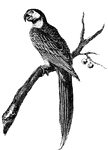
Macaw
The Macaws, the largest of the Parrots, are recognizable from their bare cheeks and long tapering tails.
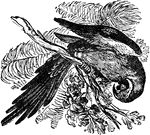
Macaw
A genus of birds native to tropical South America, remarkable for their size and beauty of their plumage.…
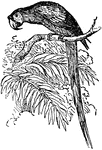
Macaw
Large colorful New World parrots. They are the largest birds in the parrot family in length and wingspan.
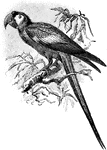
Macaw on Branch
Macaws are small to large, often colorful New World parrots. Macaws are native to Mexico, Central America,…
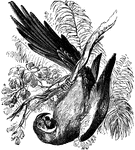
Blue and Yellow Macaw
The blue and yellow macaw is a group of large parrots, here hanging upside down from a tree branch.

Parakeet Macaw
Native to South America, the parakeet macaw is renowned for its powers to imitate human speech.
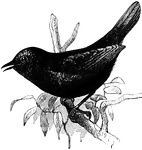
Magellanic Tapaculo
Scytalopus magellanicus. "A genus of South American formicarioid passerine birds, of the family Pteroptochidae.…

Magpie
A bird of the crow family, closely related to the jays but distinguished by having a much longer and…
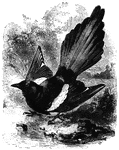
Magpie
The magpie builds its nest in a high tree or a lofty hedge. It is omnivorous, but prefers meat, such…
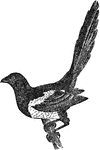
Magpie
A beautiful bird classed with the crow family, but differing from the common crow in having a smaller…
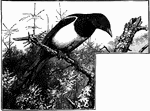
A Magpie Sitting on a Tree Branch Looking Down While Surrounded by Other Trees
"The Pica rustica, or Magpie, extends through the Palaearctic Region, and reaches Formosa and North…

magpie
"Pica. rustica hudsonica. Lustrous black, with green, purple, violet, and even golden iridescence, especially…
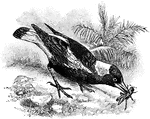
Australian Magpie
The Australian Magpie (Cracticus tibicen) is a bird in the Artamidae family of crow-like birds. It was…
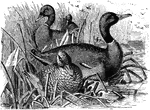
Mallards
"Anus boscas. Mallard. Wild or Domestic Duck. Green-head. Bill greenish-yellow. Feet orange-red. Iris…
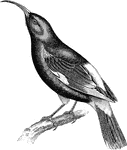
Mamo
"Drepanis pacifica, the Mamo, is black, with golden rump, upper and under tail-coverts, tibiae, and…
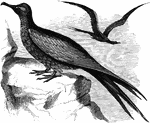
Man-of-War Bird
The man-of-war bird (also known as the frigate-bird or frigate-pelican) is noted for its extraordinary…
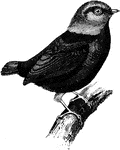
Red-capped Manakin
Pipra mentalis, the Red-capped Manakin, has black plumage with a red head, neck, and thighs.
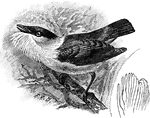
White-bearded Manakin
The White-bearded Manakin, Manacus manacus, is a small passerine bird which breeds in tropical South…
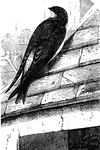
European House Martin
The European house-martin, which has an affinity for living in the vicinity of man.
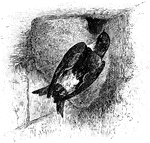
House Martin
The House Martin (Delichon urbicum), sometimes called the Northern House Martin or Common House Martin,…
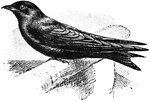
Purple Martin
The male has a deep lustrous steel blue and black bill. The female is greenish brown and glossed with…
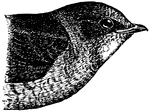
Purple Martin (Female)
The Purple Martin (Progne subis) is the largest North American swallow at 20 cm length. Adults have…

Purple Martin (Male)
The Purple Martin (Progne subis) is the largest North American swallow at 20 cm length. Adults have…
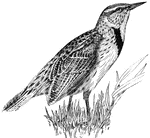
Meadowlark
The meadowlark does not travel in flocks. It eats grains and is characterized by a dark band cross its…

Meadowlark
Known in Virginia as the old-field lark, the meadow-lark is a migratory bird that feeds on insects and…
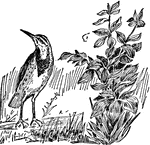
Meadowlark
A bird of North america, and common in the United States as far south as the Mexican boundary.
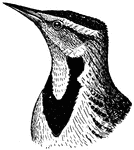
Meadowlark
Meadowlarks are birds belonging to the genus Sturnella in the New World family Icteridae. This genus…
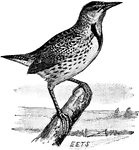
Eastern Meadowlark
The Eastern Meadowlark, Sturnella magna, is a medium-sized icterid bird, very similar in appearance…
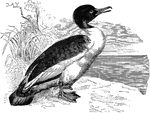
Merganser
"Mergus merganser. Merganser. Goosander. Nostrils near middle of bill. Frontal feathers extending acutely…
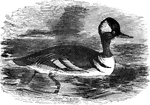
Hooded Merganser
Measuring about nineteen inches long, the hooded merganser is common in North America, its head adorned…

Red-breasted Merganser
"Mergus serrator. Red-breasted Merganser. Nostrils near base of bill. Frontal feathers extending obtusely…
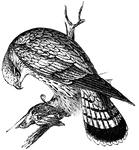
Merlin
With sharp claws, penetrating vision, and enormous strength, it is easy to understand that these birds…
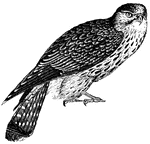
Merlin
With sharp claws, penetrating vision, and enormous strength, it is easy to understand that these birds…
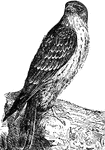
Merlin
A bird of the falcon family, differing from the genus falco in having longer and more slender tarsi…
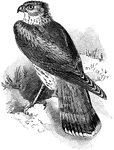
Merlin
"The letter C marks the point where the vessel to be exhausted is attached." -Century, 1889The Merlin…
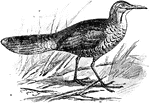
Mesites
The mesites (Mesitornithidae) are a family of birds of uncertain affinities. They are smallish, near…
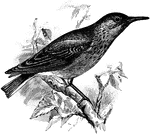
Common Miner
The Common Miner (Geositta cunicularia) is a passerine bird in the Furnariidae family of ovenbirds.
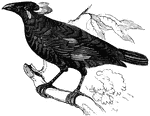
Mino
Found in Java and Sumatra, the mino-bird posses a remarkable ability to replicate human speech.
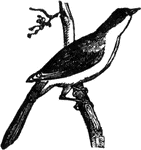
Mockingbird
The Virginia Mockingbird is endowed with a perfection of voice far exceeding any other bird in creation,…
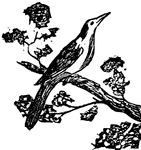
Mockingbird
A singing-bird of North America remarkable for its exact imitations of the notes of other birds.

Mockingbird
A group of New World passerine birds best known for the habit of some species of mimicking the songs…
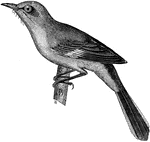
Mockingbird
"Mocking-Birds. Bill much shorter than head, scarcely curved as a whole, but with gently-curved commissure,…
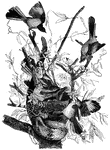
Mockingbirds Attacking a Rattlesnake
A flock of mocking-birds attacking a rattlesnake in a tree, which was threatening a nest.
